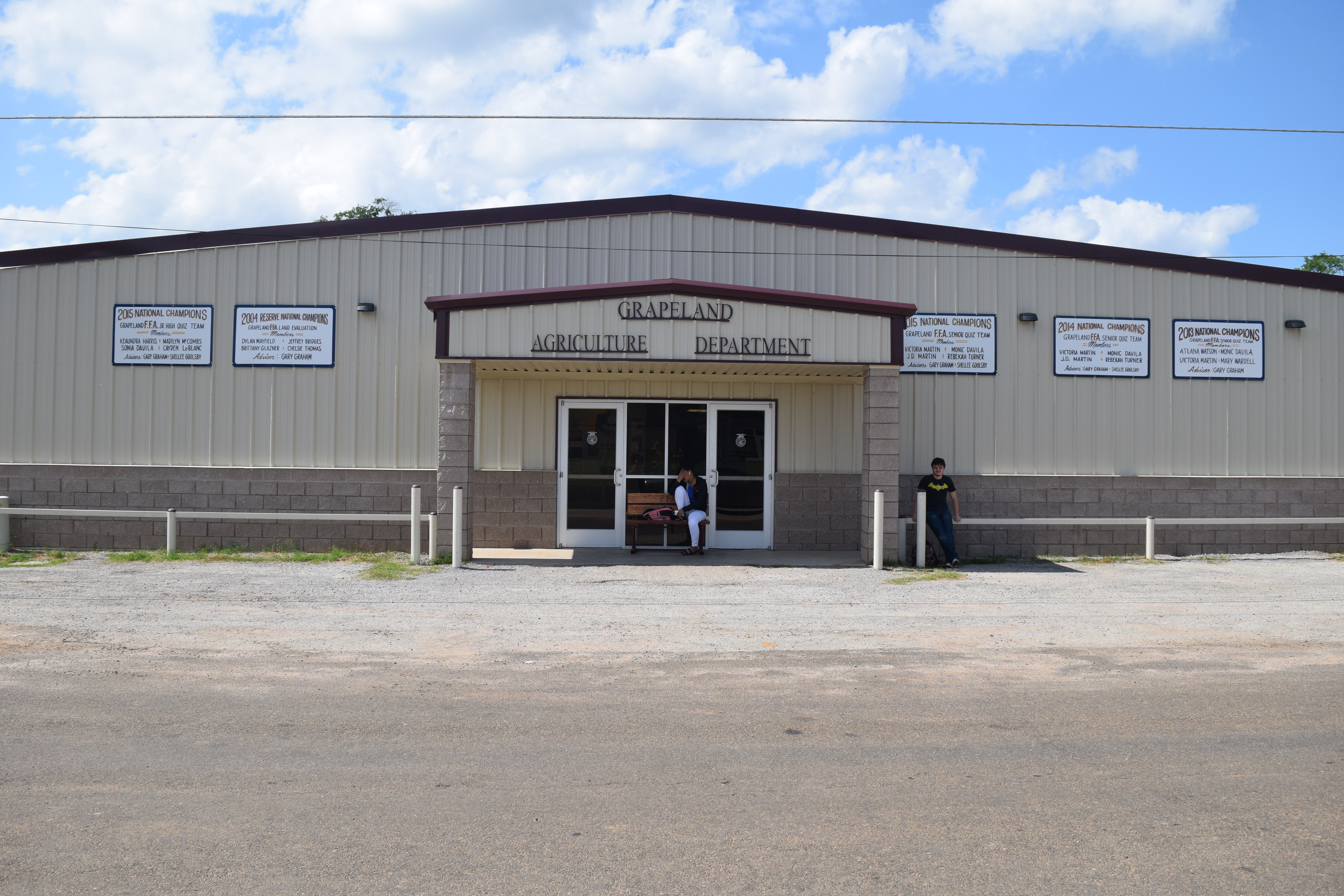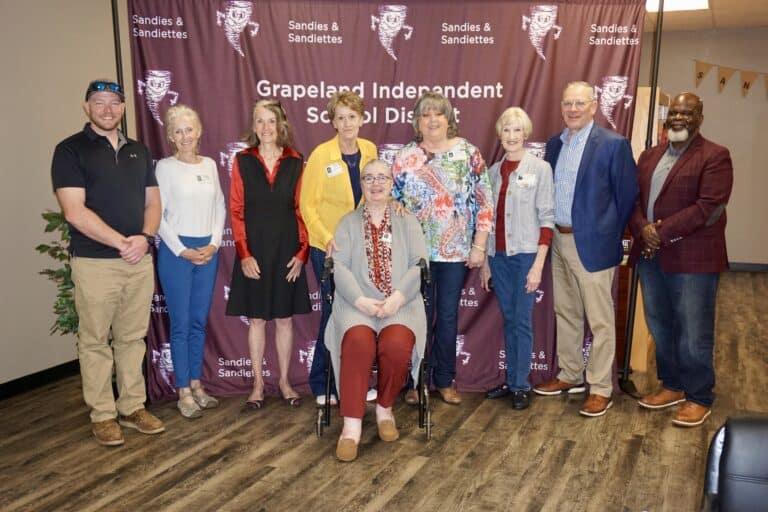FFA: Laying the Foundation for Success

By Will Johnson
Messenger Reporter
GRAPELAND – “When the FFA first started back in 1928, everything was still mostly rural. It was considered a class for farm boys,” Grapeland FFA Advisor Gary Graham said in an interview earlier this week.
“You didn’t see it in the big cities. As a matter of fact, when I took Ag in high school it was still known as the Future Farmers of America. It stayed that way until 1998, when they changed the name. It changed because of technology in agriculture which has grown the industry where it’s so much more than farming and raising an animal,” he said.
Now known as the National FFA Organization, Graham said the industry is very diverse and indicated a lot of people are making their living in agriculture who have never set foot on a farm.
“Research is being done in labs, say in New York, where people are taking seeds and trying to figure out how to produce more corn or beans per acre. We are getting more and more people on this earth and we are using up more and more land with homes, shopping centers and highways,” he explained.
Today’s farmers are being asked to feed an ever increasing population with less resources available which has helped to create a burgeoning job market in agricultural research and technology, Graham explained.
“That’s why it’s not just cows, plows and sows, anymore. There is a lot more to it. There are robots in agriculture these days that do a lot of the work people used to,” Graham said. “We have tractors that plow land that don’t even have a driver in them. They use GPS (Global Positioning System) signals. On these huge farms, they may be plowing 10 or 12 rows at one time and that row may be a mile long. A farmer can run two or three tractors with a GPS signal, not even be in the tractor, turn around and go back.”
Another technological breakthrough in the world of agriculture has been the use of drones. Farmers can fly the unmanned aircraft over their crops to check on irrigation, harvesting, plant surveillance, counting and pest control.
“You can do this from your front porch just by watching the cameras. There is so much technology coming out, some of the older guys think this is like Star Wars where it’s hard to believe you can even do that,” he laughed.
Moving to a different area, the FFA advisor discussed the importance of knowing what types of land a person might encounter, the quality of that land and how the initial assessment of land can help stimulate job growth.
“We have two different competitions in land judging and home site evaluation,” Graham said. “The land judging is looking at the dirt from an agricultural point of view. What are we going to be able to grow? From the home site side, we are looking at it from the perspective of we need to build a home here. Will a septic system work? Or, someone might be coming in with a shopping center or apartment complex. What is the foundation needed? Will the soil support it?”
Graham said the land judging side ultimately answers the question, “Is this land good enough for farming?”
“We may not farm it this year – we may just run cattle on it – but it does answer the question about the land being used in the most intensive way possible. The most intensive use of a piece of land is to go in there, plow it up, disc it up and plant new crops on it. That is a lot more intense than letting the land grow grass and letting horses and cows walk around and eat it,” he said.
From the home site evaluation side, it all starts with determining if the land is viable for building a structure or structures. Once it is given the green light, architects, contractors, construction workers, etc. descend on the location to build. If it is a business or multi-residential home, employees are hired to manage the day-to-day operations and it all started with the initial evaluation.
“Some of the land taken up through the building, might not have been used for farming. It might not have been used for anything but for raising timber. But the timber is where the lumber is coming from that is going on the buildings. Then it’s gone,” he said.
Graham said this also creates problems with wildlife because it destroys the animal’s natural habitat.
“For every action there is a reaction. Somewhere down the line, something is going to have to be turned into farm land to feed the growing population. I tell the students all the time ag research is really growing field that you can get into. There are a lot of different things we didn’t have to think about years ago.” Graham said.
“We have less area and more people to feed with less room to grow the food. There are going to be a tremendous amount of jobs in ag research in how to produce more with less. How can we produce more beef, using less grain because that grain is used to feed both livestock and people? Cattle eat corn and so do people,” he said.
“A lot of young people today, they’re not thinking about agriculture as a career. They are technologically based. They are video based. They want to do something with phones or computers. They don’t want to be out in the farming world,” he said.
The average age of the American farmer is getting higher and higher and according to Graham it is well over 60 years of age in 2017.
“That’s a little scary. What is it going to be in 10 or 15 years?” Graham asked.
Changing gears somewhat, Graham was asked how he could get students involved in FFA and show the program had a lot to offer in helping prepare someone for life after high school.
“We have recruiting programs where we go and talk to the kids and show them what we have to offer. Then, we try and get them involved in competitions and take them to conventions and show them the different companies that are there and recruiting potential employees,” he explained.
While many of the ag research programs require a degree, not all students are prepared for college immediately after high school. Graham was asked how an FFA program could help prepare someone for beginning a career after high school graduation.
“When I first started teaching we called it local adaptation. What was in the area around the school? The biggest local jobs might have been in welding, like here in Grapeland with Vulcraft. We made sure the kids had opportunities to acquire that skill,” he said.
In other cities, Graham explained, the FFA program might be near an area that manufactures automobiles. This would lead the FFA program to perhaps concentrate more heavily on engine maintenance, construction and repair.
“We try to get kids started and give them the skills they need to start their career,” Graham said.
Will Johnson may be contacted via e-mail at [email protected].






5